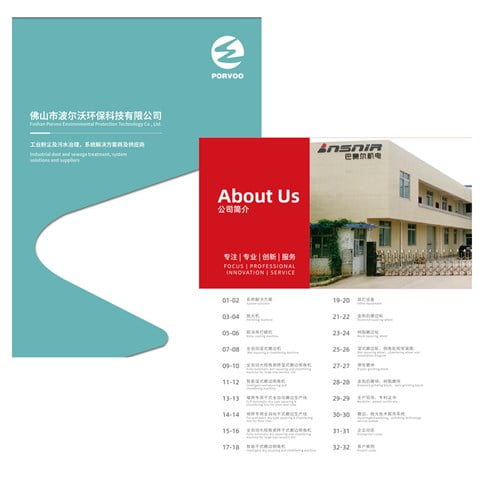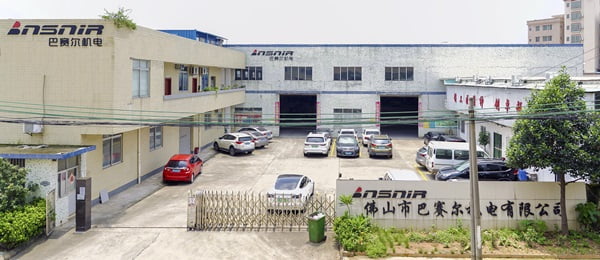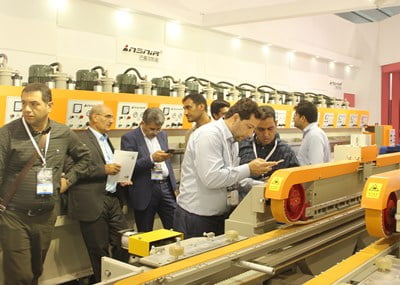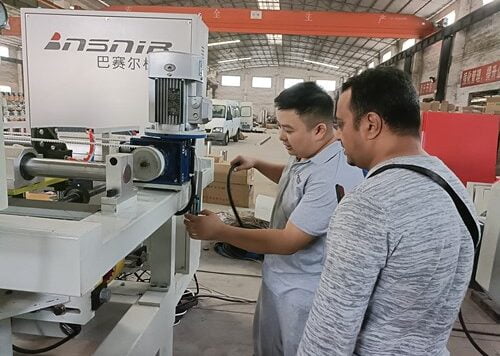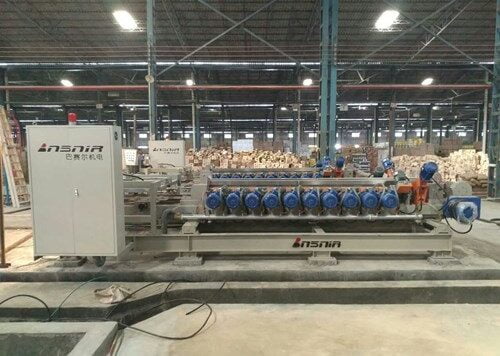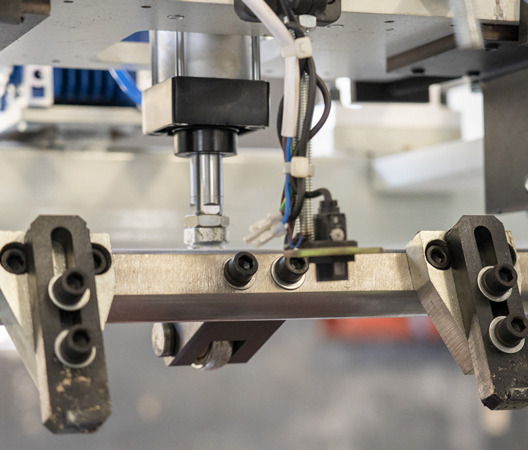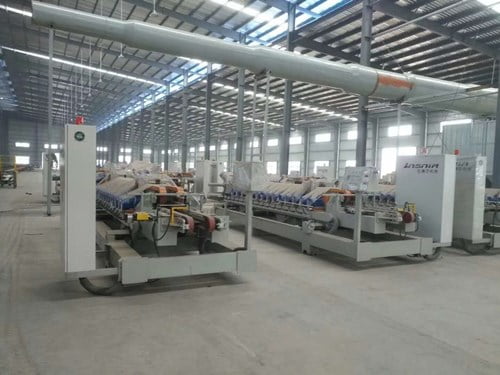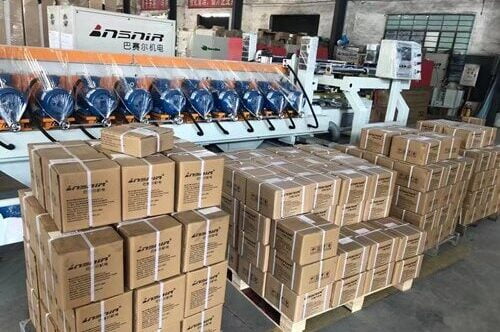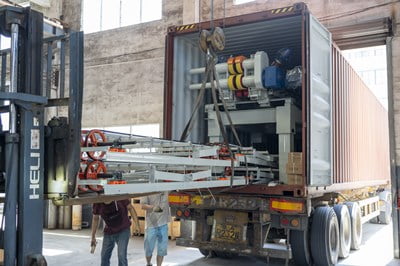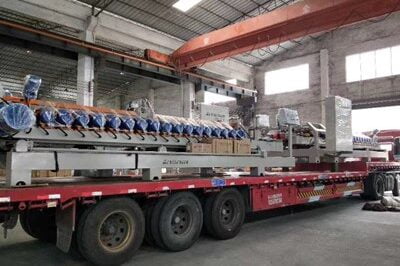The ceramic tile industry has witnessed a dramatic shift toward large format tiles, with manufacturers scrambling to meet growing demand for oversized architectural surfaces. However, this trend presents a critical challenge: traditional polishing equipment simply cannot handle the unique requirements of tiles measuring 1200x2400mm and beyond. Production facilities worldwide are discovering that their existing machinery creates bottlenecks, generates higher defect rates, and fails to achieve the pristine surface quality that large format applications demand.
This equipment mismatch doesn’t just slow production—it threatens profitability. Manufacturers report up to 23% higher rejection rates when processing large format tiles on conventional machinery, while energy consumption increases by 35-40% due to multiple processing passes. The economic impact compounds when premium large format tiles, often selling for 3-4 times standard tile prices, must be discarded due to surface imperfections.
BASAIR Tech has developed specialized line polishing solutions that address these exact challenges. This comprehensive guide examines how purpose-built large tile machinery transforms oversized tile processing, explores cutting-edge technologies driving performance improvements, and provides actionable insights for manufacturers considering equipment upgrades.
What Makes Large Format Tiles Different in Processing Requirements?
Large format tiles present fundamentally different engineering challenges compared to standard ceramic products. The sheer physical dimensions create structural stress points during processing, while surface area expansion amplifies any imperfections exponentially.
Mechanical Stress Distribution
Processing tiles exceeding 1000mm requires completely different mechanical approaches. Standard polishing heads designed for 300-600mm tiles cannot maintain consistent pressure distribution across extended surfaces. Industry testing reveals that pressure variations of just 2-3% across large format surfaces create visible quality differences in finished products.
According to ceramic engineering research from the Italian Ceramic Society, large format tiles experience 40% higher mechanical stress during polishing due to their increased span-to-thickness ratios. This fundamental physics challenge necessitates specialized equipment designed specifically for oversized dimensions.
Surface Quality Consistency Challenges
Large format applications, particularly in commercial architecture, demand flawless surface uniformity. A single large tile might cover 2.88 square meters, making any processing inconsistency immediately visible. Traditional line polishing systems create subtle variations that become pronounced across such expansive surfaces.
| Tile Format | Surface Area | Quality Tolerance | Processing Complexity |
|---|---|---|---|
| Standard (300x600mm) | 0.18 m² | ±5% variation | Low |
| Large (600x1200mm) | 0.72 m² | ±2% variation | Medium |
| Oversized (1200x2400mm) | 2.88 m² | ±1% variation | High |
How Do Line Polishing Machines Handle Oversized Tile Challenges?
Modern line polishing equipment addresses large format processing through three critical engineering innovations: extended support systems, adaptive pressure control, and synchronized processing coordination.
Extended Structural Support Systems
Oversized tile processing requires fundamentally redesigned support infrastructure. Standard conveyor systems lack the structural integrity for tiles weighing 35-45 kg while maintaining the precision tolerances necessary for quality polishing.
Advanced large format systems incorporate reinforced support frames with intermediate bearing points every 400mm, compared to 800mm spacing in conventional equipment. This critical modification reduces tile deflection by up to 78%, according to mechanical engineering analysis from ceramic equipment manufacturers.
Adaptive Pressure Control Technology
The breakthrough innovation in big tile polishing lies in adaptive pressure distribution systems. Rather than applying uniform pressure across the entire surface, modern equipment uses segmented polishing heads that automatically adjust pressure based on real-time surface feedback.
In our experience working with large format producers, this technology reduces surface quality variations from ±8% to ±1.5%, a improvement that directly translates to higher yields and reduced waste costs.
Synchronized Multi-Head Processing
Large format tiles require multiple polishing heads working in perfect synchronization. Big tile polishing systems employ servo-controlled head positioning with precision timing control accurate to ±0.1 seconds, ensuring seamless surface treatment transitions.
What Are the Key Features of Big Tile Polishing Equipment?
Contemporary large format polishing systems integrate five essential technological components that distinguish them from conventional ceramic processing equipment.
Variable Speed Conveyor Systems
Large tile machinery requires precise speed control to accommodate the extended processing time needed for oversized surfaces. Advanced systems offer infinitely variable speeds from 0.5 to 15 meters per minute, compared to fixed-speed operation in standard equipment.
Multi-Stage Polishing Head Configuration
Professional large format systems typically employ 8-12 polishing stages, compared to 4-6 stages for standard tiles. Each stage uses progressively finer abrasives, from 60-grit initial shaping to 3000-grit final polishing.
| Processing Stage | Grit Size | Purpose | Large Format Advantage |
|---|---|---|---|
| Rough Shaping | 60-120 grit | Surface leveling | Extended contact time |
| Intermediate | 220-400 grit | Scratch removal | Uniform pressure distribution |
| Fine Polishing | 800-1500 grit | Surface smoothing | Precision control systems |
| Final Finishing | 2000-3000 grit | High gloss achievement | Synchronized processing |
Integrated Quality Monitoring
Modern systems incorporate real-time surface quality monitoring using laser measurement systems and digital imaging analysis. These systems detect surface variations as small as 0.05mm and automatically adjust processing parameters.
Which Technologies Drive Modern Large Tile Machinery Performance?
Four technological innovations have revolutionized format-specific equipment performance over the past five years, enabling manufacturers to achieve previously impossible quality and efficiency standards.
Servo-Controlled Polishing Head Positioning
Precision servo motors control individual polishing head positioning with ±0.1mm accuracy. This technology, adapted from aerospace manufacturing, ensures consistent surface contact pressure across the entire tile surface.
Intelligent Cooling Systems
Large format processing generates significantly more heat due to extended contact times and increased surface area. Advanced cooling systems use temperature-controlled coolant circulation with flow rates up to 450 liters per minute, maintaining optimal processing temperatures.
Real-Time Process Optimization
Artificial intelligence algorithms analyze processing parameters continuously, adjusting variables like pressure, speed, and coolant flow based on tile characteristics and quality requirements. European manufacturers report 15-18% efficiency improvements using these systems.
Modular Component Architecture
Modern specialized polishing equipment uses modular designs allowing rapid reconfiguration for different tile formats. Manufacturers can switch between 600x1200mm and 1200x2400mm processing in under 45 minutes.
How to Choose the Right Format-Specific Equipment for Your Production?
Selecting appropriate format-specific equipment requires careful analysis of production requirements, quality standards, and economic considerations.
Production Capacity Assessment
Calculate your large format tile production targets realistically. A typical high-capacity system processes 180-220 large format tiles per hour, compared to 400-500 standard tiles. Factor this throughput difference into your capacity planning.
Quality Requirement Analysis
Determine your target market quality standards. Residential applications may accept ±3% surface variation, while commercial architectural projects often require ±1% consistency. This specification directly impacts equipment selection and investment levels.
Economic Justification Framework
Large format processing equipment typically costs 40-60% more than standard systems, but generates 25-35% higher profit margins on finished products. Payback periods generally range from 18-24 months for manufacturers processing 1000+ large format tiles monthly.
As ceramic industry analyst Marco Bertolini notes, “Manufacturers who invest in purpose-built large format equipment report 28% higher profitability compared to those attempting to adapt existing equipment.”
What Are the Economic Benefits of Specialized Large Format Processing?
The economic advantages of dedicated large format tiles processing extend beyond simple production efficiency improvements.
Premium Product Pricing
Large format tiles command premium pricing, typically 180-300% of standard tile prices. This pricing differential creates substantial revenue opportunities for manufacturers equipped with appropriate processing technology.
Reduced Waste Costs
Specialized equipment reduces rejection rates from 12-15% to 3-5% for large format production. Given the high material costs of large format tiles, this waste reduction generates immediate cost savings.
Energy Efficiency Improvements
Purpose-built systems consume 20-25% less energy per square meter of processed tile compared to adapted conventional equipment, according to energy efficiency studies conducted by major ceramic equipment manufacturers.
Market Differentiation Advantages
Manufacturers with advanced large format capabilities access premium market segments including luxury residential, commercial architecture, and high-end hospitality projects—markets with higher margins and stable demand.
What Limitations Should Manufacturers Consider?
While specialized large format processing offers significant advantages, manufacturers should understand three key limitations before making equipment investments.
Higher Capital Investment Requirements
Initial equipment costs for large format systems typically range from $2.8-4.2 million, compared to $1.5-2.1 million for standard processing lines. This investment requires careful financial planning and longer-term commitment.
Increased Facility Requirements
Large format equipment requires expanded floor space, typically 40-50% more than standard production lines. Ceiling height requirements also increase due to larger tile handling systems.
Specialized Maintenance Demands
Complex positioning and control systems require specialized technical expertise for maintenance. Many manufacturers need additional training programs or service contracts to maintain optimal performance.
However, these limitations are offset by the technology’s transformative impact on production capabilities and market opportunities.
The ceramic tile industry’s evolution toward large format products represents both challenge and opportunity. Manufacturers who invest in purpose-built large format processing technology position themselves advantageously in premium market segments while achieving superior operational efficiency.
Success in large format tile production requires more than equipment upgrades—it demands comprehensive understanding of the unique processing challenges, technological solutions, and economic considerations that define this specialized manufacturing sector. The manufacturers who recognize this complexity and invest accordingly will lead the industry’s next growth phase.
What specific large format processing challenges does your facility face, and how might specialized equipment solutions transform your production capabilities?
Frequently Asked Questions
Q: What are Line Polishing Machines for Large Format Ceramic Tiles?
A: Line Polishing Machines for Large Format Ceramic Tiles are specialized industrial machines designed to polish, lap, and finish the surfaces of big ceramic tiles efficiently. They provide a consistent and uniform gloss or matte finish, improving tile quality by smoothing surfaces and enhancing durability. These machines are essential in the tile production line to achieve high-quality polished or glazed tiles with minimal defects.
Q: How do Line Polishing Machines improve the quality of ceramic tiles?
A: These machines improve quality by:
- Ensuring a uniform and consistent surface finish
- Reducing defects like chips, cracks, and uneven edges
- Enhancing surface gloss and texture through precise grinding and polishing
- Increasing tile durability and lifespan by creating a smooth, defect-free layer
This results in tiles that are not only visually appealing but also more durable for long-term use.
Q: What features should I look for in a Line Polishing Machine for large format tiles?
A: Key features include:
- Adjustable polishing heads (usually with multiple claws for better coverage)
- Suitable size range to handle large tiles (e.g., from 300 mm up to 1000 mm or more)
- Variable feeding rates to balance speed and quality
- Power capacity to handle thick tiles (up to 30 mm thickness)
- Capability for satin finishing, lapping, and high-gloss polishing
These features help tailor the machine to your production needs and tile specifications.
Q: Can Line Polishing Machines be integrated into automated tile production lines?
A: Yes, many Line Polishing Machines are designed for seamless integration into automated production lines. They can connect with other equipment such as tile cutters and edge chamfering machines to create a fully automated process. This integration enhances efficiency, reduces labor costs, and increases output volume, especially beneficial for high-demand tile manufacturing.
Q: What are the efficiency benefits of using Line Polishing Machines for large format ceramic tiles?
A: These machines boost efficiency by:
- Streamlining the polishing process, reducing manual labor
- Increasing production speed with adjustable feeding rates
- Minimizing waste due to consistent finishes and fewer defects
- Handling bulk production with multiple polishing spindles operating simultaneously
Overall, manufacturers can produce more tiles of higher quality in less time, improving profitability and competitiveness.
Q: How does the polishing process affect the finish options for large format ceramic tiles?
A: The polishing process allows customization of tile surface finishes such as:
- High gloss polished finish for a shiny, reflective look
- Satin finish for a matte, elegant appearance
- Lapping for a smooth but less glossy surface
By controlling polishing pressure, abrasive types, and machine speed, manufacturers can meet diverse aesthetic and functional requirements for different tile applications.
External Resources
- Elevating Your Tile Production Process: The Power of Line Polishing Machines – This article explains the role and benefits of line polishing machines for large format ceramic tiles, discussing improvements in tile quality, production efficiency, and reduced waste.
- Line Polishing Machine For Ceramic Tile Production – Basair – Details the specifications, functions, and applications of Basair’s line polishing machines, including models suitable for large format ceramic, glazed, and stone tiles.
- Yongtao Ceramic Tile Polishing Machine for Sale – Presents solutions for edge grinding and chamfering of ceramic tiles, highlighting automated line polishing machines appropriate for large-scale ceramic tile manufacturing.
- POLISHING LINES FOR CERAMIC TILES – SIMEC SpA – SIMEC introduces industrial polishing lines specifically designed for porcelain ceramic tiles, emphasizing high productivity and quality.
- Precision Ceramic Tile Manufacturer Customizable Stone Polishing Machine – Showcases customizable stone and ceramic line polishing machines used for precision polishing of large tiles, with applications in both ceramic and stone processing.
- Polishing Machines for Large Format Tiles – Stone & Tile Machines – Provides an overview of various polishing machines tailored for large format ceramic and stone tiles, focusing on automation and scalability for industrial tile production.

